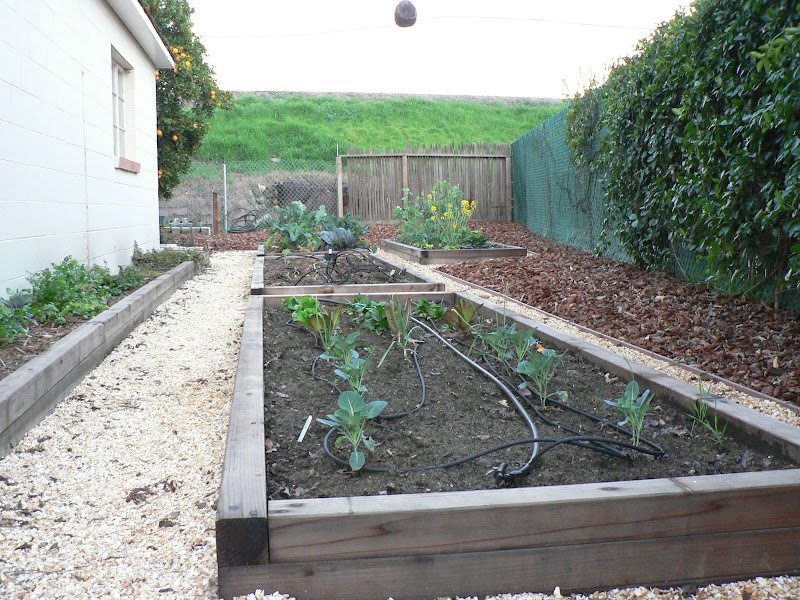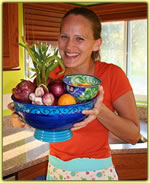Fear not! In fact, this simple gardening step serves as a straight-forward means to achieving plump, juicy tomatoes and crisp, spicy peppers year after year. I promise—if this math-hating gardener can do it, so can you!
Rotating your crops is an important step for a healthy garden. Each vegetable variety ekes a different nutrient out of the soil. Likewise, each variety comes with its unique breed of bacteria and virus that are out to destroy it. By planting your crops in a different spot each year, you allow the soil to replenish and you prevent the bacteria from building up, which makes your plants healthier and more productive.
Since most of us won’t remember where we planted our eggplants two summers ago, it’s best to keep a garden journal. In addition to being handy for crop rotation purposes, I’ve found it useful in remembering which vegetable varieties I planted. Was it an Ichiban eggplant or a Globe, a Brandywine tomato or a Purple Prince? Plus, it’s fun to look back over the years and see just how many plants you’ve tried and tasted.
With a few, quick notes and a simple drawing, you’re on your way to healthy crop rotation and a charted history of your garden.
Materials You Need:
· Graph Paper
· Ruler
· Accordion folder
· Pencil
· Abacus (just kidding!)
How to Do It:
· Draw a replica of your garden on paper. If you have garden beds, use one piece of graph paper per bed. If your beds are 8-feet by 4-feet, use a ruler to draw an 8-inch by 4-inch rectangle. (If it’s a 4-foot by 2-foot bed, make your drawing 4-inches by 2-inches. You get the point.) If you aren’t using beds, but have one large garden plot, you can arrange it into quadrants.
· Label each bed in a way that you’ll remember it year after year. I label mine with a number and a description, such as “bed closest to fence” or “bed next to garage.” Also, put the year and season, such as “Summer 2009.”
· Use spacing requirements to determine where to plant, how many plants you can add to each bed, and whether you need to revisit your garden dreams. I’ve been overcome with excitement in the nursery. I love spotting new herb varieties or a new type of tomato, throwing anything into my cart that strikes my fancy. Later, when I attempt to plot out my garden, I find I don’t have enough space for everything. Then I cram plants too tightly together, hoping that luck will allow me to grow them all anyway. Since I began plotting my garden, I have saved myself the frustrations of watering a plant all summer long only to watch it produce one mere tomato because it didn’t have enough breathing room, or having to crawl between fallen vines on a hunting expedition for ripe peas that have crowded together. Plan before you buy!
· Mark each plant by name on your drawing. Even if you put a stake in the ground with each plant’s name next to it, as the veggies grow the labels tend to get hidden. Or a naughty squirrel decides to dig it out and replace it with a nut. Either way, I like having the plants identifiable on my garden graph. This way, I can easily recognize which plants I placed where. I also save any planting instructions from seed packets or labels and store them together with my drawings in an accordion file.
· Revisit your drawing before you plant next year, and rotate your crops accordingly. If you planted tomatoes in garden bed #1 last summer, move them to garden bed #2 this year. In fact, you’ll want to wait three or four years before you plant tomatoes in bed #1 again. If you don’t have enough beds, you can consider planting your tomatoes in a wine barrel one year. Also, tomatoes, peppers, eggplants, and potatoes belong to the same veggie family. You should not plant a tomato where you planted a pepper last year, or an eggplant where you planted a potato, and so forth. In general, all your crops need to be rotated in this fashion, allowing your soil time to replenish.
· Try to plan your garden three years out. Knowing that I needed to wait three or four years before I could plant tomatoes or peppers in the same garden bed, I built five garden beds. I know that I cannot plant three beds with peppers and tomatoes, lest I have nowhere to put them the following years. This has also forced me to try new veggies and expand my list of favorites.
With a few sheets of paper and an eye to the future, crop rotation isn’t as bad as it sounds. In fact, it’s pretty darn easy. Good luck—and happy gardening!






